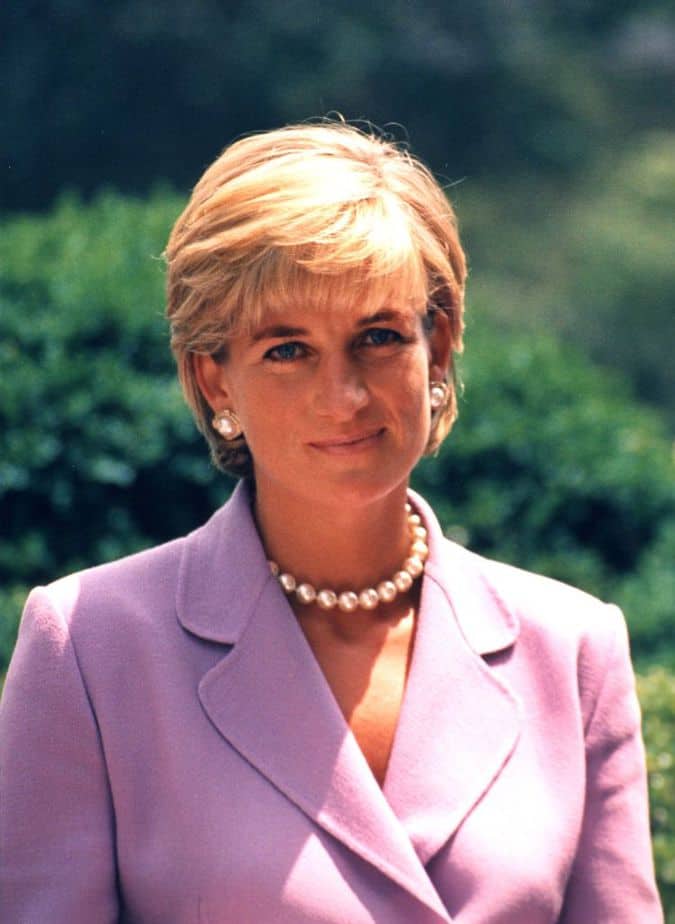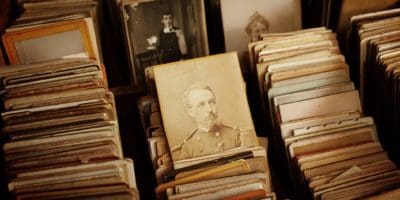10 historical events that happened in Paris
Paris is known to be a worldwide cultural capital city. Its streets are choke full with remains of its cultural and historical past. History has shaped Paris and its monuments as much as Paris has shaped global western history.
To understand this intricate relationship, I have decided in this article to list 10 major historical events that happened in Paris. To discover them, keep reading!
Also, there is one thing you should know if you are curious about all things French and Parisian: some locals are giving free tours to help you experience the French capital like a true Parisian. If you are willing to explore the hidden gems in each of Paris’ iconic neighborhoods and truly feel the city like a local, click here to book yours!
Walking through the city’s streets will be the perfect opportunity to understand how Paris’ history has come to shape its aspect and monuments.
So, without further ado, let’s dive together into the top 10 most important historical events that happened in Paris!
1. The Storming of the Bastille (Prise de la Bastille) – 14 July 1789.
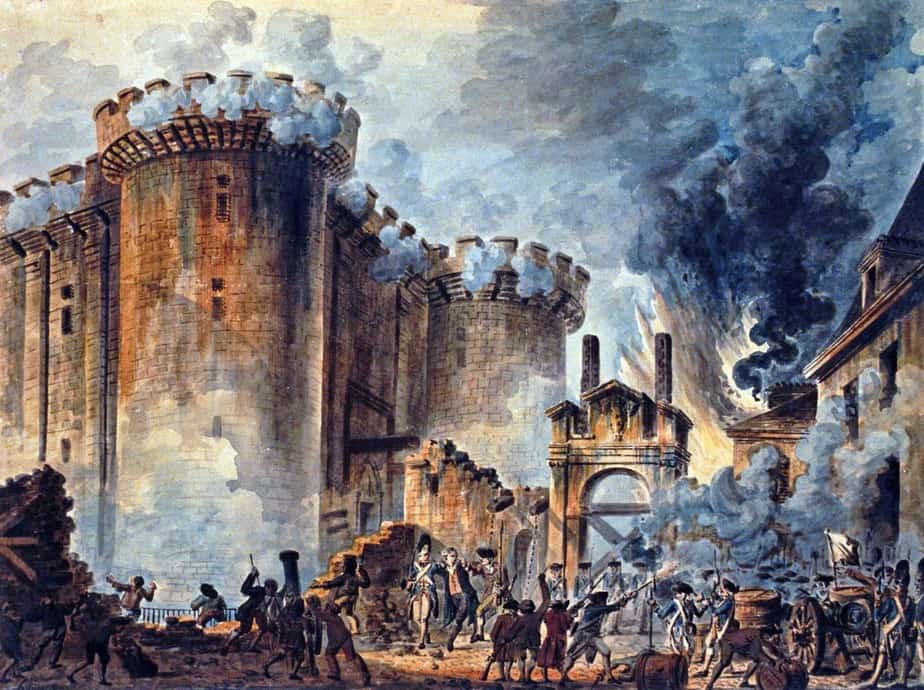
The storming of the Bastille by Houël. Sourced from Wikipedia
This one might be the most important historical event in French contemporary thought. It is engraved in French collective memory, and it is the date of the most important national holiday in France: the 14 Juillet (also known as Bastille Day in English).
The Storming of the Bastille happened in the 18th century, on the afternoon of 14 July 1789. It represented a revolt of the people against royal authority. Tensions had been rising all summer due to lack of edible goods and high taxes in Paris, and on the 14th, a massive group of armed people decided to take over the Bastille, which was a political prison, a fortress and a previous medieval armory.
Even though this storming bears tremendous symbolic value because it freed prisoners believed to be injustly held captive by the State, at the time, only 7 inmates remained in the Bastille the day it was stormed. A fun event is that sensing that a revolt was rising, famous marquis de Sade who was an inmade at the time had made arrangements to be transferred out 10 days prior to the fall of the Bastille.
The 14th of July 1789 is considered by many scholars as the flashpoint of the French Revolution. With time, this event came to embody fully the French spirit of social justice and revolution against injust power.
2. The Execution of Louis XVI by decapitation (La decapitation de Louis XVI) – 21 January 1793

The execution of Louis XVI in January 1793 by Isidore Stanislas Helman – WikiCommons
Another episode of the French revolution: the execution of king of France Louis XVI on the guillotine. This spectacular execution of the last king of France took place on the actual Place de la Concorde (formerly known as Place de la Révolution).
The execution was decided by the National Convention (the first government of the Revolution) after a vote during which no deputy voted “not guilty”. Before he was executed, he tried to deliver a speech but the crowd’s noise made it impossible to be heard. On the morning of the execution, a faithful royalist had planned an escape for the king alongside 300 other royalists, but they had been denounced and thus the plan failed.
The man who executed the king, Charles-Henri Sanson, later stated that Louis XVI “bore all this with a composure and a firmness which has surprised us all. I remained strongly convinced that he derived this firmness from the principles of the religion by which he seemed penetrated and persuaded as no other man.”
If you want to learn more, you can check out our Top 10 Interesting Facts About Bastille Day.
And one a side note, if you are interested in the sulfurous figure that was the Marquis de Sade, then check out All About The Marquis de Sade!
3. The Coronation of Napoléon I (Sacre de Napoléon et Joséphine à Notre-Dame) – 2 December 1904.

The coronation of Napoleon by David, sourced from Wikipedia
Alongside Louis XIV and the Général de Gaulle, Napoléon I is one of the most famous historical French figure. Napoléon I was coronated emperor in the Notre-Dame cathedral (it was the first coronation that ever happened there), in presence of the pope.
He decided to mix traditions of Carolingian era, Ancien Régime and French revolution, in order to establish his legitimacy amongst all of these conflicting circles.
The grandiose and luxurious ceremony was painted by artist Jacques-Louis David who produced two monumental paintings out of it, one of them being the Consecration of the Emperor Napoleon I and Coronation of the Empress Josephine in the Cathedral of Notre-Dame de Paris on 2 December 1804. The total cost of the ceremony was 8,5 million francs.
If you want to read more about Napoléon, check Where is Napoleon Bonaparte buried.
4. The Exposition Universelle of 1855 (Exposition Universelle de 1855) – 15 May to 15 November 1855.
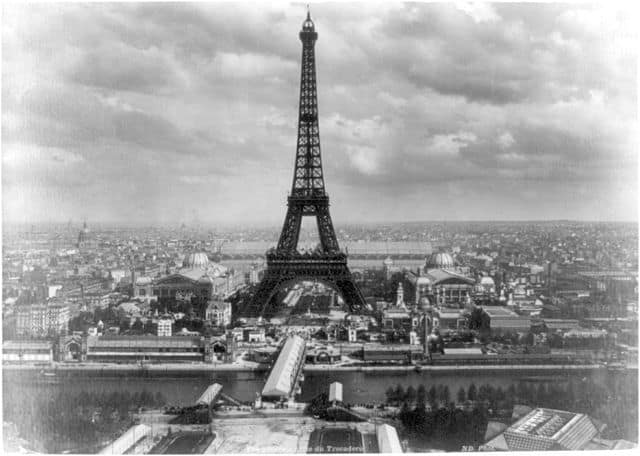
Eiffel Tower at Exposition Universelle, Paris, 1889 by Neurdein courtesy of The United States Library of Congress – WikiCommons
This exposition universelle was the second worldwide (following London in 1851) and the first in Paris. The Exposition Universelle is a fair where different participating countries showcase their latest progress and advancement on subjects such as technicality, arts, science, etc.
In 1855, it was reported that 5,162,330 visitors attended the exposition. While the exhibition costed $5,000,000, it made a profit of barely one tenth of its massive expenses. In 1855, 34 countries participated in the exhibition.
Napoléon III, who ruled France at the time, wanted France to be able to display its best Bordeaux wines. He asked brokers to range all French wines following diverse criteria such as price and quality – this led to them establishing the famous Bordeaux Wine Official Classification, which is still used today and dates back to 1855.
Fun fact: the Eiffel Tower was itself inaugurated at a later Exposition Universelle in Paris, in 1889.
5. Paris Siege (Siège de paris par les Allemands) – 19 september 1870 to 28 january 1871
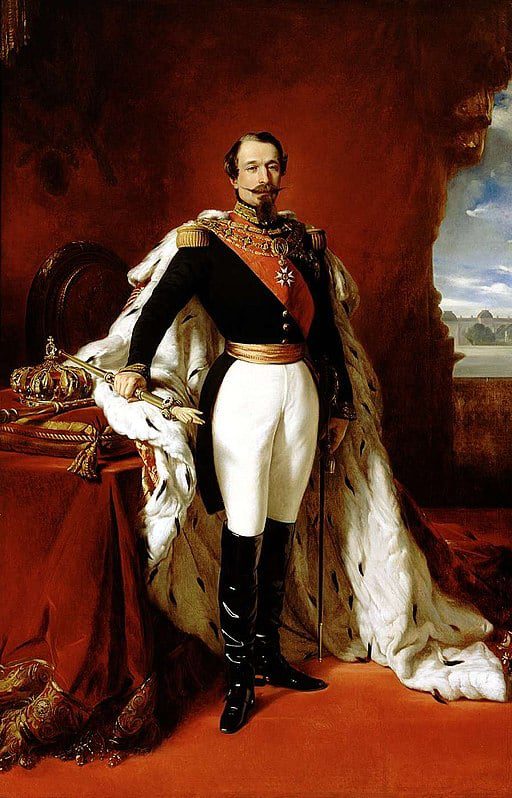
Portrait of Napoleon III – Franz Xaver Winterhalter – Source : Wikimedia Commons
This siege was unprecedented and led to Prussian forces surrounding the capital, capturing of the king Napoléon III and the defeat of France in the Franco Prussian war.
During the siege, food became so scarce that Parisians had to slaughter the two only elephants of the capital, Castor and Pollux, to eat their meat. Local restaurants even started serving dog, cat and horse meat!
6. First solo flight above the Atlantic Ocean – 1927.
1927 was a milestone for science all over the world: that year, Charles Lindbergh landed in Paris after accomplishing the first solo flight without stopover above the Atlantic Ocean. His landing was followed in Paris by a triumph from the population who came to see him land.
7. End of the German Occupation of France (Fin de l’Occupation) – 1944
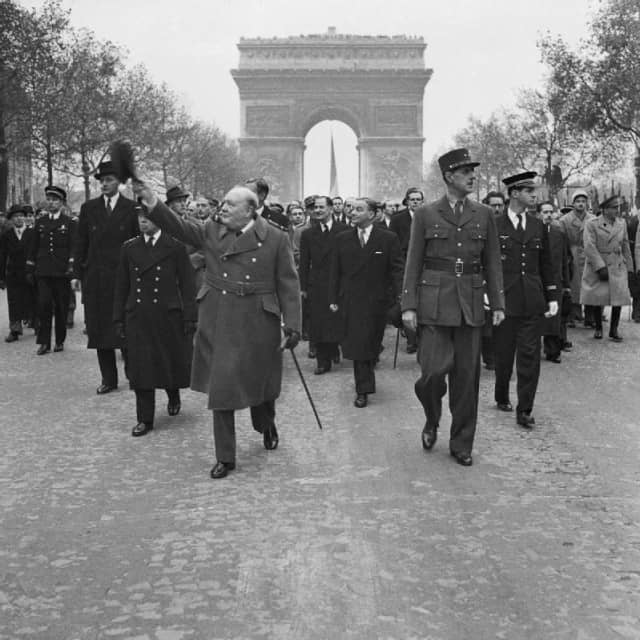
Winston Churchill and General Charles de Gaulle walk down the Avenue des Champs-Elysee duirng the French Armistice Day parade in Paris, 11 November 1944 by Major Horton – WikiCommons
French Occupation is an event of the World War II when Hitler’s Germany defeated France. The armistice that specified France’s capitulation was signed on 22 June 1940 by the Maréchal Pétain, head of French government at that time.
During the Occupation, France was separated into two territories: the north, under occupation of Germany, and the South, called “free zone”.
The occupation was marked by the Général de Gaulle’s speech from London to make a call for resistance. German occupation ended on August 25th, when the International Freedom Forces freed Paris. This day, the Général de Gaulle delivered his famous speech « Paris outragé ! Paris brisé ! Paris martyrisé ! Mais Paris libéré ! » (Paris outraged, Paris martyrized, but Paris liberated !) in front of a massive crowd who has gathered to listen to him in front of the Hotel de Ville.
Right after, daily newspaper Le Parisien Libéré started to be released and the following morning, on August 26th, a victory parade took place on the Champs-Elysées, under the greetings of 1 000 000 Parisians who came to see the troops. That night, the German army bombed Paris for the last time, in the north and the east of the city, causing 200 deaths.
If you want to read more about the Général de Gaulle, you can check out All about the Général de Gaulle.
8. The Universal Declaration of Human Rights (UDHR) was adopted by the United Nations in Paris (L’Assemblée Générale des Nations Unies adopte la Déclaration Universelle des Droits de l’Homme au Palais de Chaillot.) – 10 december 1948.
9. May 1968 protests (Mai 1968)
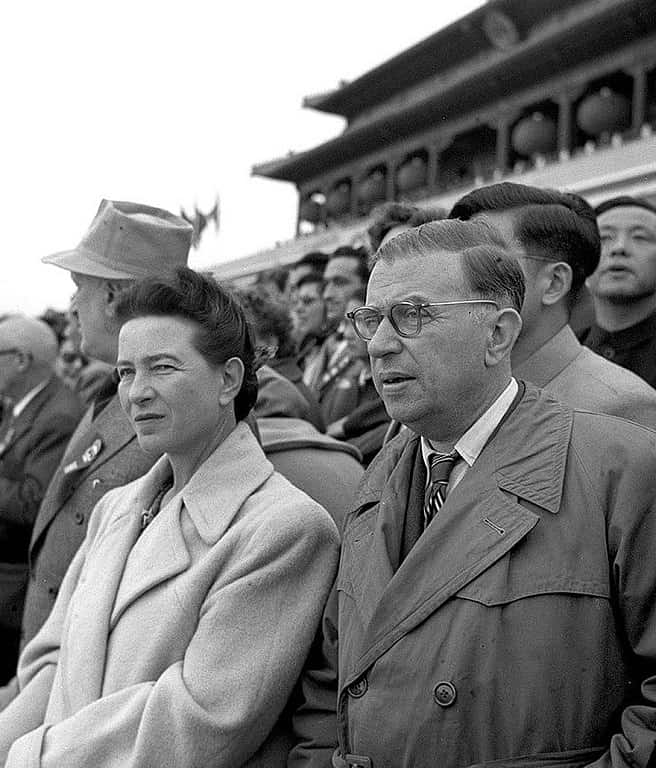
Simone de Beauvoir with Jean-Paul Sartre in Beijing in 1955 by Liu Dong’ao. Jean-Paul Sartre was a major intellectual figure in France, and his role became particularly prominent during May 1968 events in Paris. – Source: WikiCommons
This month is a month set in stone in the mind of many Parisians. May 1968 was a month of civil unrest in France, with over 22% of the French population going on demonstrations, general strikes, and organizing to occupy universities and factories. When the events peaked, French economy reached stalemate.
At the height of the protests, barricades had been established in the streets and leaders feared revolution or a civil war; President Général de Gaulle even went missing for a few days, plunging the nation into further uncertainty and chaos. He had secretly flown to Germany to figure out his next move.
The protests began with students occupating their universities protesting against American imperialism, capitalism and consumerism. More broadly, May 1968 came to be associated with societal progress and revolution against traditions and heritated values.
The French government made a mistake by responding to pacifist student protests with violence and police repression. Then, unions joined the strike in sympathy with students, and from there, the unrest spread to the whole country. The opposition to the police was so fierce that it exacerbated the government’s response, leading to actual battles between the people and the police in the Latin Quarter.
What is really interesting is that even though the general strike of May 1968 was the biggest general strike ever attended, President Général de Gaulle ignored the will of the people, dissolved the Assembly, called for new elections and emerged from the unrest more powerful than ever.
As I told you, May 1968 is considered a very important event in French society. It keeps influencing the way French intellectuals think the history of the country. Alain Geismar famously considered May 1968 “as a social revolution, not as a political one.”
10. Death of Princess Diana Spencer in a car accident (mort de Diana Spencer, princesse de Galles, à la suite d’un accident de voiture dans le tunnel du pont de l’Alma.) – 31 August 1997

Flowers left outside Kensington Palace in tribute to Diana, Princess of Wales – Source: Wikipedia
Lady Diana, Princess of Wales, died at 36 years old in the night of the 31st August 1997 in a car crash inside the tunnel of the Alma bridge.
Dodi Fayed (her partner at the time) and the car’s driver, Henri Paul, were also found dead at the scene. A lot of conspiracy theories have surrounded Lady Diana’s death, some blaming paparazzi hypothetically following the car, others an orchestrated conspiracy. However, later investigations by French police found out that Henri Paul, the driver who was also deputy head of security at the Ritz, was the sole responsible for the crash, as he had been driving around intoxicated. Neither Lady Diana nor her partner were wearing a seatbelt.
The circumstances of her death were particularly horrifying, with photographers arriving at the scene before the police and medical help, and taking pictures of the crash instead of helping. 5 photographers were later taken into custody and one bas beaten by witnesses because he insisted on taking pictures.
Princess Diana’s death was followed by international shock and grief; it was estimated that 2,5 billion people watched her funeral which occurred days later in London on television.
–
There you have them, the top 10 most famous historical events that happened in Paris! If you are curious about exploring more in depth the relationship between Paris’ history and its monuments, you can check out 10 Historical Monuments in Paris. And to continue exploring more about French symbolism and history, 8 Interesting Facts About the French Flag.
Planning a trip to Paris ? Get ready !
These are Amazon’s best-selling travel products that you may need for coming to Paris.
Bookstore
- The best travel book : Rick Steves – Paris 2023 – Learn more here
- Fodor’s Paris 2024 – Learn more here
Travel Gear
- Venture Pal Lightweight Backpack – Learn more here
- Samsonite Winfield 2 28″ Luggage – Learn more here
- Swig Savvy’s Stainless Steel Insulated Water Bottle – Learn more here
Check Amazon’s best-seller list for the most popular travel accessories. We sometimes read this list just to find out what new travel products people are buying.

